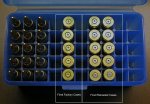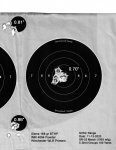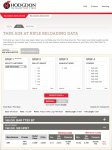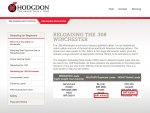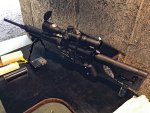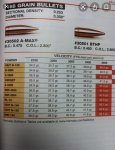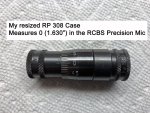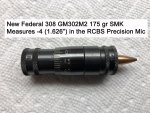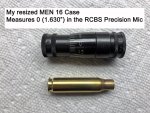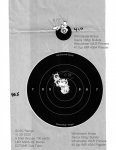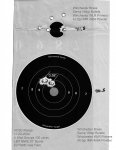Bullet: Sierra 168 gr
Brass: Once fired Mem16 7.62x51
Primers: Winchester WLR Large Rifle
Powder: IMR 4064, 41.5 gr
COAL: 2.800”
I have been away from rifle reloading for two decades and have returned recently and started with 308 Win. I obtained good accuracy with 5 shot groups at 100 yards yesterday, but noticed light ejector extrusion marks on about 1/3 of the fired case heads. I fired 5 rounds of factory loaded Mem16 7.62x51 to foul the barrel and none of these fired case show any sign of ejector extrusion marks.
Ejector extrusion marks on the case head are typically a sign of high pressure, but I am using the starting load of 41.5 gr recommended by IMR. The powder is fresh from Graff’s, but the primers are 20 years old. I have stored the primers indoors in a dry and cool location.
I am using a Redding Type S bushing resizing die with a 0.333 neck bushing. This gives me 0.0035 neck tension. I did load and chamber a few cartridges while releasing the BCG on a loaded magazine and the COAL did not decrease. The 2.800” COAL should be fine.
NOTE: I reloaded 20 Remington 308 cases also and about 1/3 of those cases exhibited the same signs.
I had a few old boxes of Federal GM308M I fired a while back through the same rifle and the ejector extrusion marks were more pronounced and the primers had the same cratering.
Any suggestion on what to look for?
Brass: Once fired Mem16 7.62x51
Primers: Winchester WLR Large Rifle
Powder: IMR 4064, 41.5 gr
COAL: 2.800”
I have been away from rifle reloading for two decades and have returned recently and started with 308 Win. I obtained good accuracy with 5 shot groups at 100 yards yesterday, but noticed light ejector extrusion marks on about 1/3 of the fired case heads. I fired 5 rounds of factory loaded Mem16 7.62x51 to foul the barrel and none of these fired case show any sign of ejector extrusion marks.
Ejector extrusion marks on the case head are typically a sign of high pressure, but I am using the starting load of 41.5 gr recommended by IMR. The powder is fresh from Graff’s, but the primers are 20 years old. I have stored the primers indoors in a dry and cool location.
I am using a Redding Type S bushing resizing die with a 0.333 neck bushing. This gives me 0.0035 neck tension. I did load and chamber a few cartridges while releasing the BCG on a loaded magazine and the COAL did not decrease. The 2.800” COAL should be fine.
NOTE: I reloaded 20 Remington 308 cases also and about 1/3 of those cases exhibited the same signs.
I had a few old boxes of Federal GM308M I fired a while back through the same rifle and the ejector extrusion marks were more pronounced and the primers had the same cratering.
Any suggestion on what to look for?

